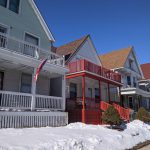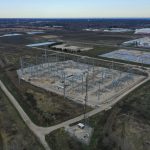Why We Drive the Way We Do (and What It Says About Us) – Book Review
Tom Vanderbilt‘s in-depth, fact-filled, and thought provoking “Traffic: Why We Drive the Way We Do (and What It Says About Us)” dives into how factors such as human nature, the automobile, and the built environment impact how we drive. Now, you may wonder why this is important or why anyone would write a book about traffic, but as he writes “considering that many of us may spend more time in traffic than we do eating meals with our family, going on vacation, or having sex, it seems worth probing a bit deeper into the experience.”
The book points out that when we drive we are forced to make quick judgements. For example, people generally make a value judgement and won’t block a high-end car from passing as often as they will to a low-end car. There’s the frightening judgement that drivers, according to a book, make when they pass a cyclist wearing a helmet. They actually pass closer to the cyclist than had he or she not been wearing a helmet, making the situation more dangerous.
Most interesting from an urbanist’s perspective are the chapters that dive into the impact of the built environment on driving habits. In the chapter titled “Why More Roads Lead to More Traffic (and What to Do About it),” it explains an often misunderstood topic, induced demand. As he writes “studies suggest that induced travel is real When more lane-miles of roads are built, more miles are driven, even more so than might be expected by “natural” increases in demand, like population growth. In other words, the new lanes may immediately bring relief to those who wanted to use the highway before, but they will also encourage those same people to use the highway more–they may make those “rational locators” move farther, out, for example– and they will bring new drivers onto the highway, because they suddenly find it a better deal.” The book also takes a look into the work of Hans Monderman, perhaps the world’s best-known traffic engineer. His designs call for “entire major intersections without lights or signs,” and have led to safer streets, because people are forced to communicate and slow down. The book goes on to examine the flaws of traffic engineering. Where for example, efforts by engineers to remove trees and obstacles near roads, much like along freeways, are intended to make streets safer, but in fact has had the opposite impact as drivers drive faster. These points are well understood by students of the urban environment, and have spurred on the ‘complete streets’ movement and encouraged opposition to freeway expansion.
This book challenges the common mindset while attempting to explain our behavior behind the wheel. It is well worth a read for anyone interested in urban policy or simply traffic.






















Haven’t heard of this one! Fascinating stuff–thanks for sharing.
@Dan Thanks it was a good read. All sorts of research regarding how and why people drive and what influences them…